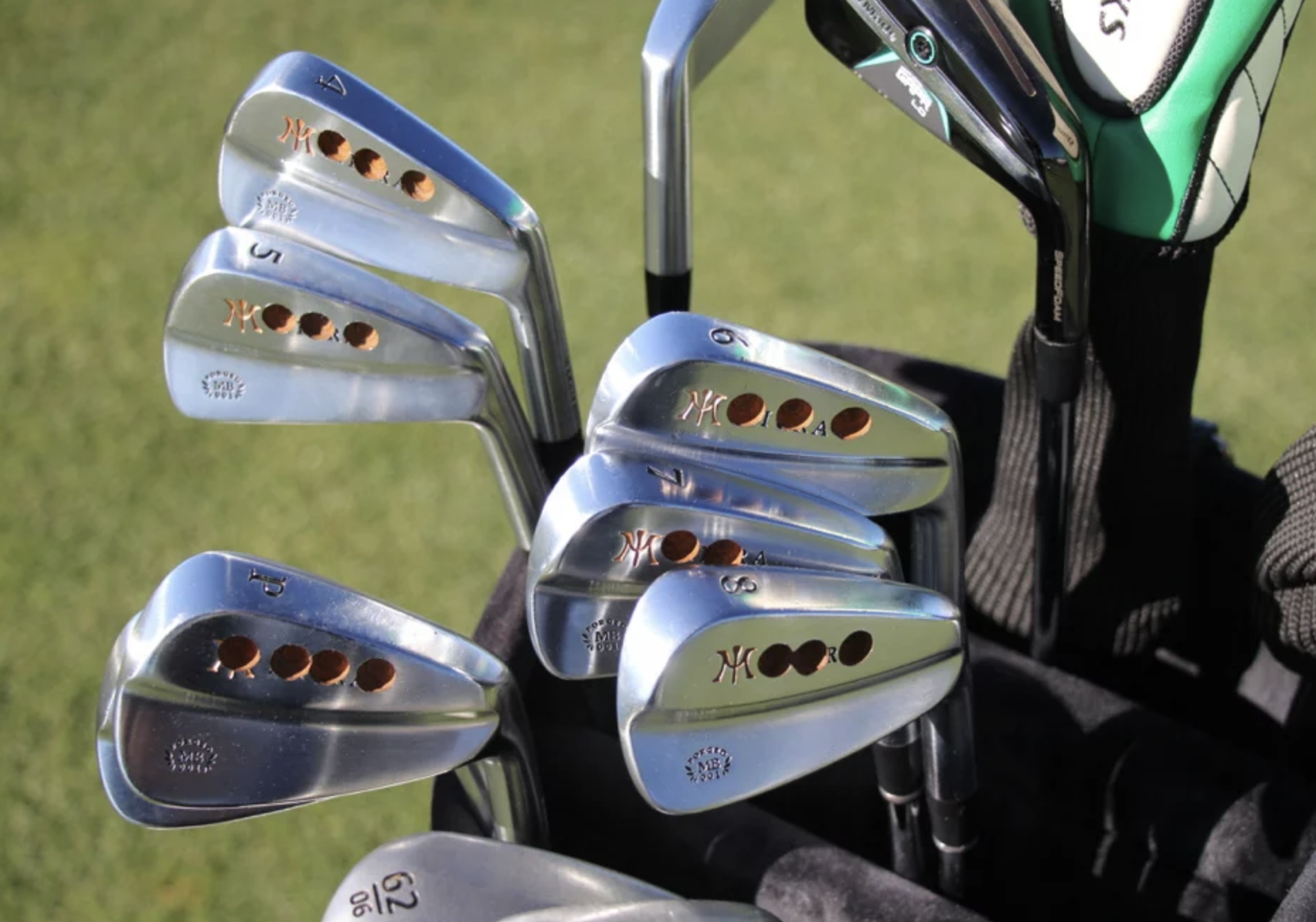
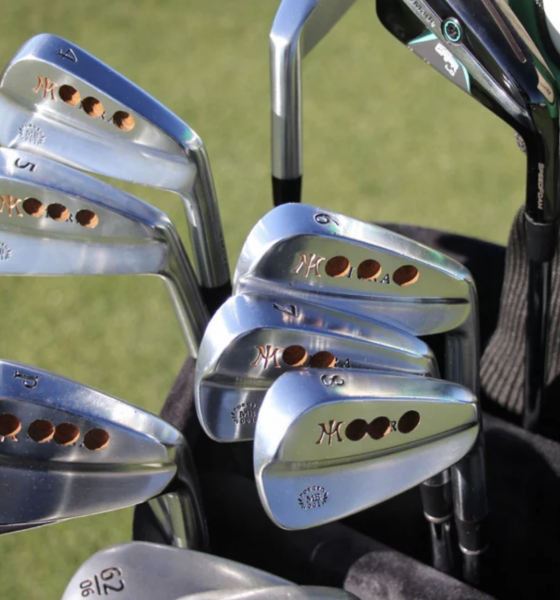
Equipment
Charl Schwartzel’s drilled-out Miura irons: A builder’s perspective
We see plenty of cavity back irons on the PGA Tour. Most of these irons have been strategically designed to position weight and center of gravity to maximize performance. Spotted this week at the AT&T Pebble Beach Pro-Am: a nonconventional set of “cavity backs” in the form of Charl Schwartzel’s drilled-out Miura MB-001 blade irons.

As first reported by Golf.com’s Andrew Tursky, Charl, an equipment free-agent, bought the irons online, and after tinkering with them (obviously, Charl is a true gear nut), he felt the irons were just a bit too heavy at D6 swing weight and wanted to bring them down to around D3. These number will seem quite arbitrary to some, so to help explain swing weight, we have a short video below
Now, the question comes down to why would he drill out the irons instead of just having the clubs built to his desired spec?
In the case of Miura irons, a company founded in Japan. The iron head weights are heavier than others on the market because Japan spec irons are generally built to shorter lengths than their North American counterparts. The clubheads are noticeably heavier in the shorter irons and wedges (see chart below), which is why we see more holes in the pitching wedge vs. the longer irons.
Since the MB-001’s are a solid muscle design with no badges or weight ports in the head, there is no other way to remove the mass needed to hit a lighter swing weight for Charl—unless Miura was to produce a set heads at a lighter weights by grinding off mass during the final production steps before final finishing.

Head weight specs 3-PW starting at 245g at the 3-iron.
As a result, when built with heavier tour weight shafts (anything 110g or above) and at a standard North American length (37″ – 7 iron, or longer), the clubs will end up being heavier than what would be considered standard swing weight (usually between D1-D4). Let me please point out that in the golf club manufacturing world there are very few standard practices or measurements beyond the USGA ruler and swing weight scale. Although the phrase “standard clubs” is still common nomenclature, it applies very little to the custom club building world.
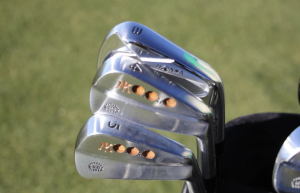
Beyond adding mass to the grip end of the club to counteract the heavier weight of the heads, a practice known as counterbalancing, the only other option is to drill mass out of the clubhead (see full video above for further explanation). Charl reportedly did the drilling himself when fine-tuning the clubs and after a few holes got them right where he likes them.
Based on the thickness of the iron muscle and the amount of mass removed from each head (roughly six grams), these holes have no effect on the performance of the irons (but have probably killed any potential resale value on the open market—bearing in mind that last part is tongue in cheek). If Charl wins another major with these, who knows what they would be worth.
Other examples
This process of drilling out mass has also been referred to as “porting,” and club builders have been doing it for a long time. In the case of wedges, porting not only helps reduce clubhead weight, but can also help (in a very, very small way) remove mass from lower in the head to raise the CG. It’s the exact reason Callaway introduced this design feature in the original PM Grind and continues with the design philosophy today in the JAWS MD5.
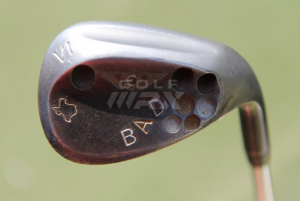
With Bryson’s wedges being more than 1″ over standard length, weight had to be removed from the head.
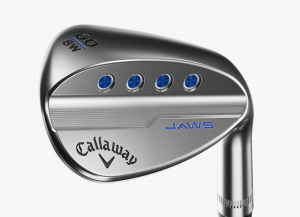
We don’t recommend you start drilling holes in your irons and wedges just yet and suggest seeing a professional club builder to help you sort out your specs and get you dialed in. For more pictures of the clubs Charl Schwartzel is using this week, head to the GolfWRX forum: Charl Schwartzel – WITB 2020 AT&T Pebble Beach
- LIKE286
- LEGIT40
- WOW25
- LOL20
- IDHT4
- FLOP6
- OB4
- SHANK44
Whats in the Bag
Kris Kim WITB 2024 (May)

- Kris Kim what’s in the bag accurate as of the CJ Cup Byron Nelson. More photos from the event here.
Driver: TaylorMade Qi10 (9 degrees @7)
Shaft: Mitsubishi Tensei 1K White 60 TX
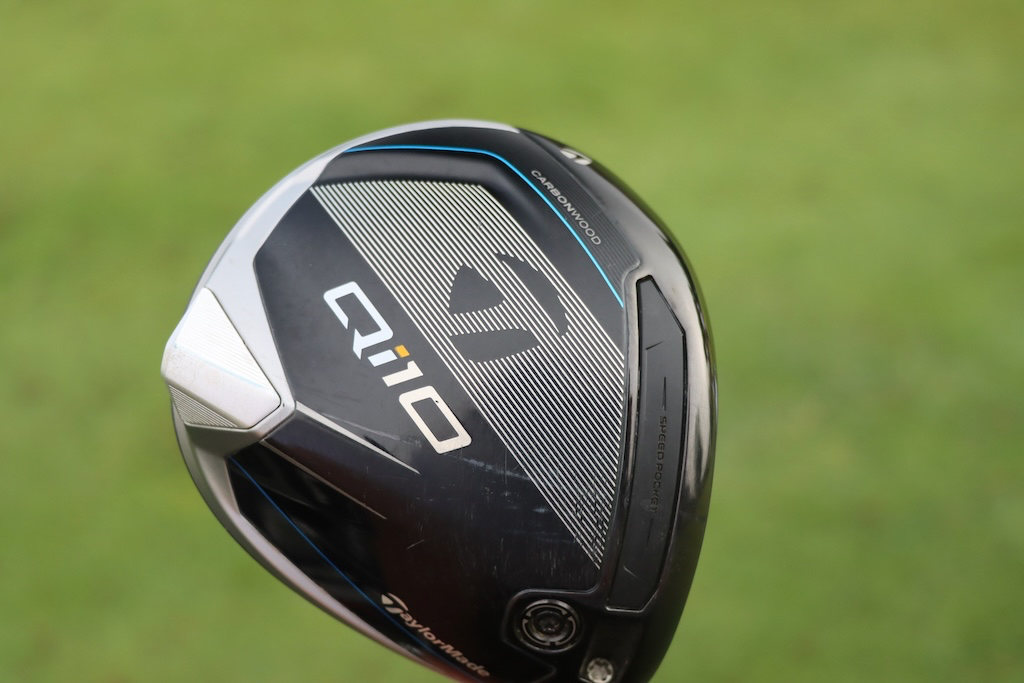

3-wood: TaylorMade Qi10 Tour (15 degrees @13.5)
Shaft: Mitsubishi Diamana WB 73 TX
Irons: TaylorMade P770 (2, 4), TaylorMade P7MB (5-PW)
Shafts: Mitsubishi Tensei 1K White 80 TX (2), Nippon N.S. Pro Modus3 Tour 120 X
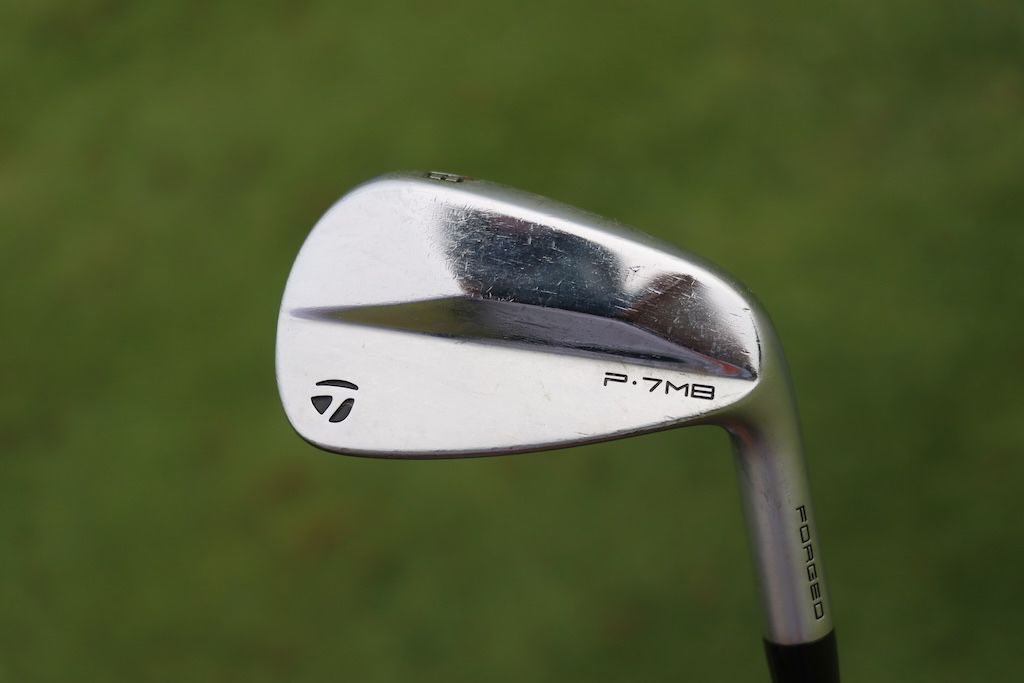

Wedges: TaylorMade MG4 (50-09SB, 56-12SB, 60-11TW)
Shafts: Nippon N.S. Pro Modus3 WV 125
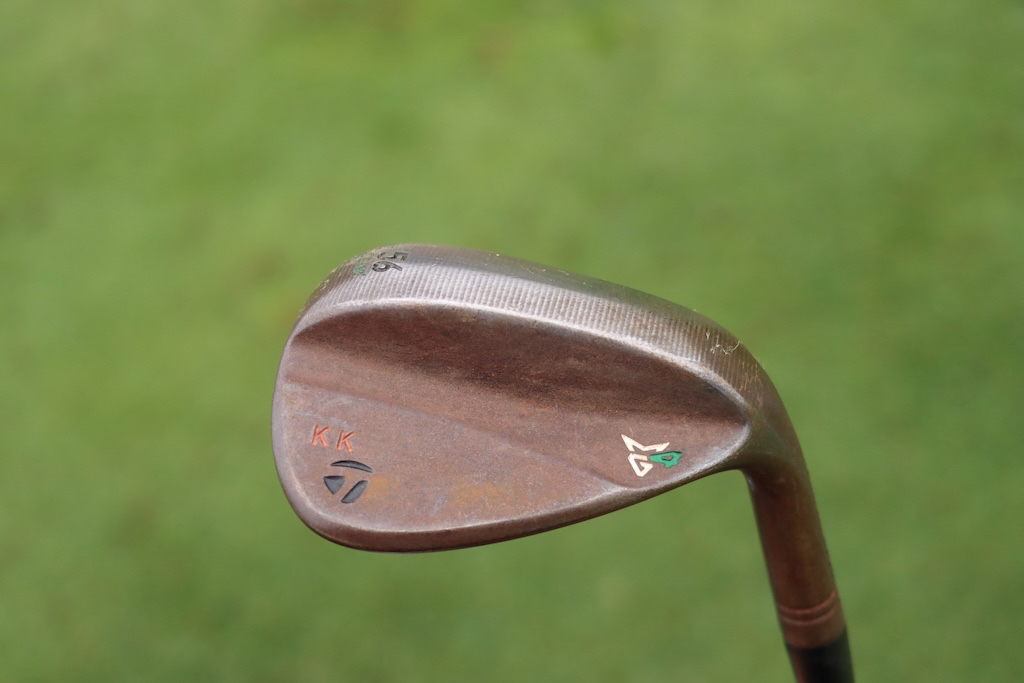

Putter: TaylorMade Spider Tour
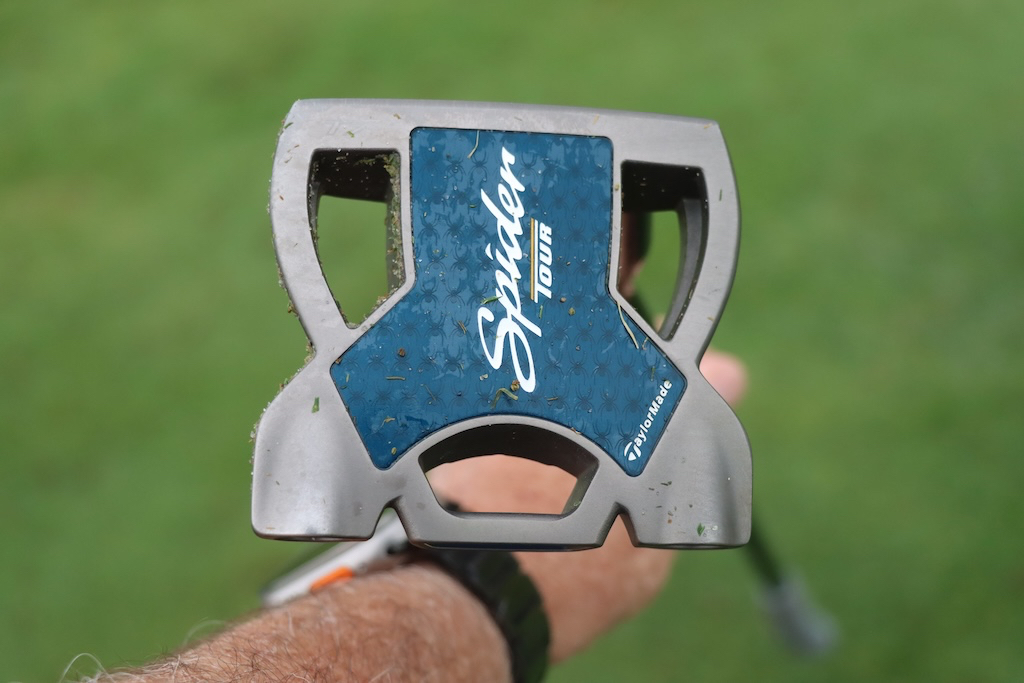
Grips: Golf Pride Tour Velvet Cord
Check out more in-hand photos of Kris Kim’s equipment here.
View this post on Instagram
- LIKE0
- LEGIT0
- WOW0
- LOL0
- IDHT0
- FLOP0
- OB0
- SHANK0
Equipment
Welcome to the family: TaylorMade launches PUDI and PDHY utility irons
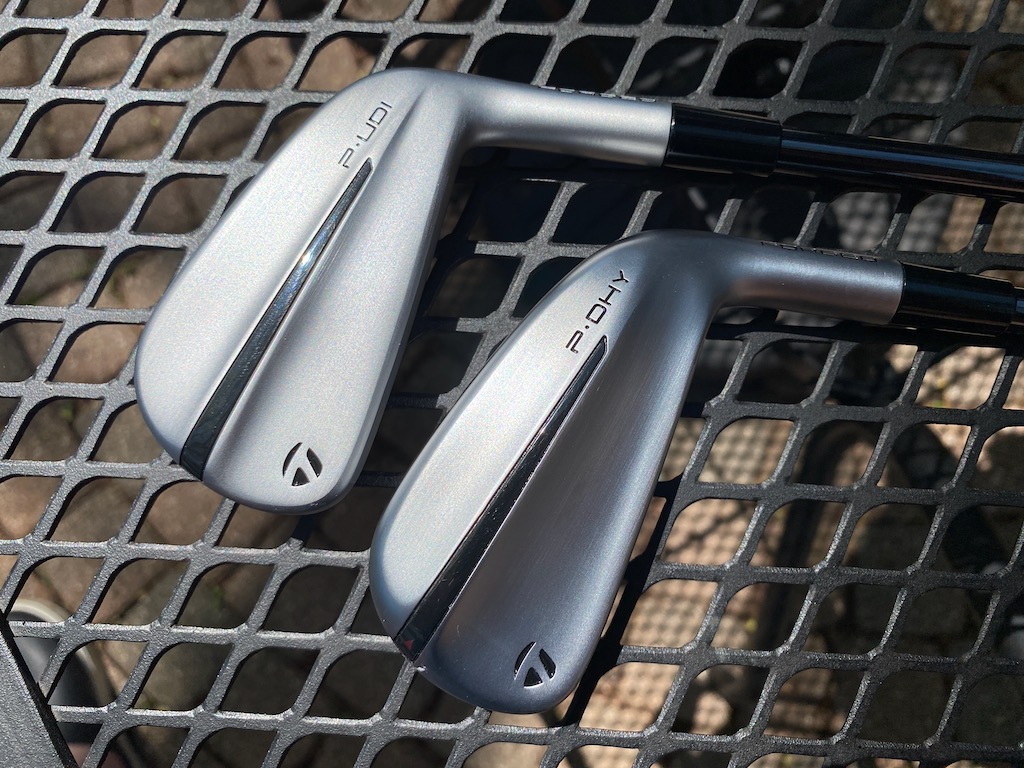
TaylorMade is continuing its UDI/DHY series with the successor to the Stealth UDI and DHY utility irons: PUDI and PDHY (which the company styles as P·UDI and P·DHY). TaylorMade is folding the designs in with its P Series of irons.
TaylorMade outlined the process of developing its new utilities this way. The company started with the data on utility iron usage. Not surprisingly, better players — i.e. those who generate more clubhead speed and strike the ball more precisely — were found to gravitate toward the UDI model. DHY usage, however, covered a wider swath than the company might have expected with six-to-18 handicappers found to be bagging the club.
TaylorMade also found that the majority of golfers playing UDI or DHY utilities were playing P Series irons at the top of their iron configurations.
Can you see where this is going?
Matt Bovee, Director of Product Creation, Iron and Wedge at TaylorMade: “As we look to the future, beyond the tech and the design language, we are excited about repositioning our utility irons into the P·Series family. P·UDI is an easy pair for players that currently play P·Series product and P·DHY is an extremely forgiving option for players of all skill levels. It is a natural fit to give these players the performance in this category that they are looking for.”
View this post on Instagram
TaylorMade PUDI
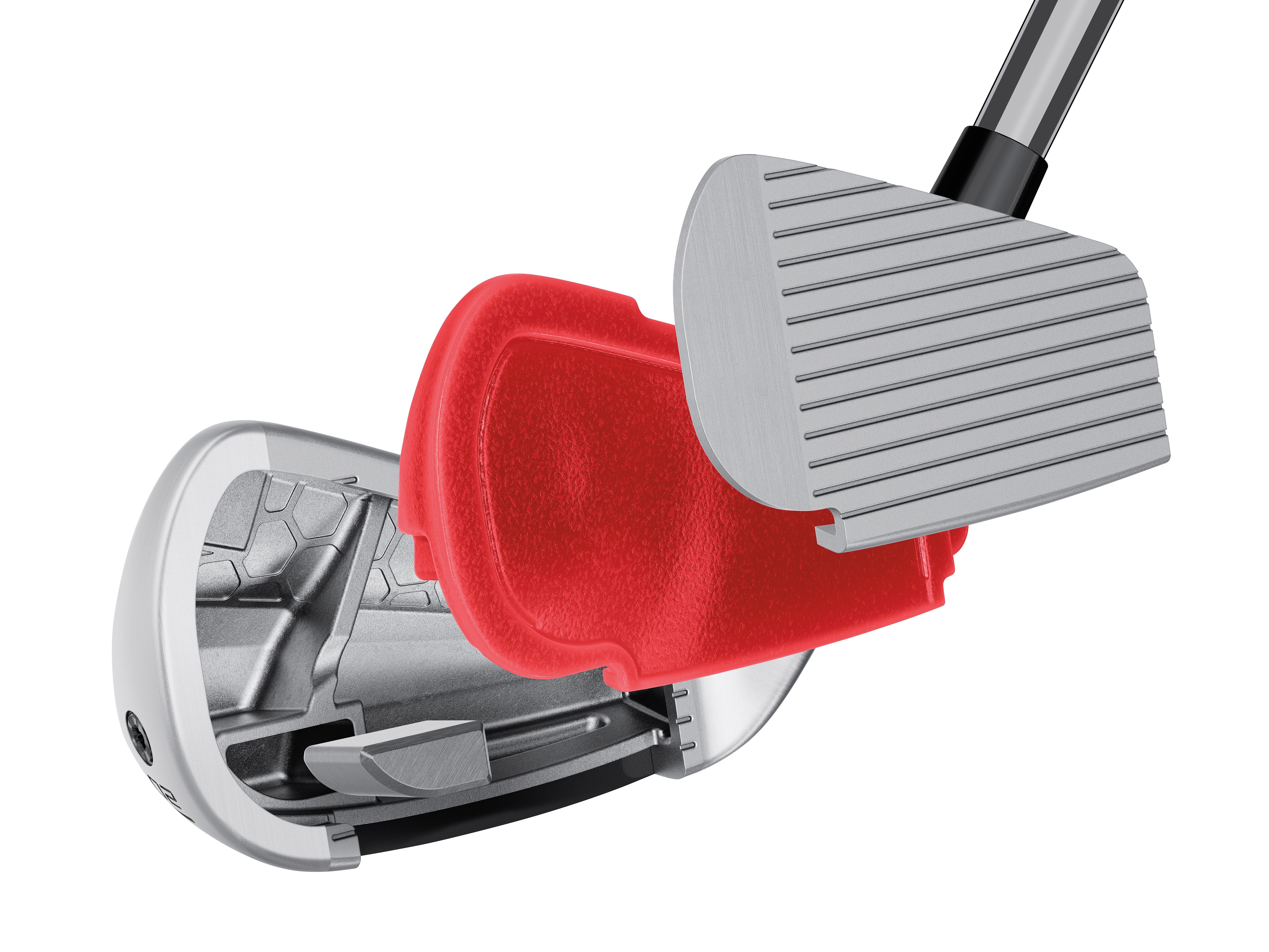
TaylorMade PUDI technology cutaway (via TaylorMade)
Crafted with tour player input, TaylorMade sought to develop a confidence-inspiring utility iron that blends with the rest of the P Series irons. Also of note: Interestingly, the PUDI has a more compact head than the P790.
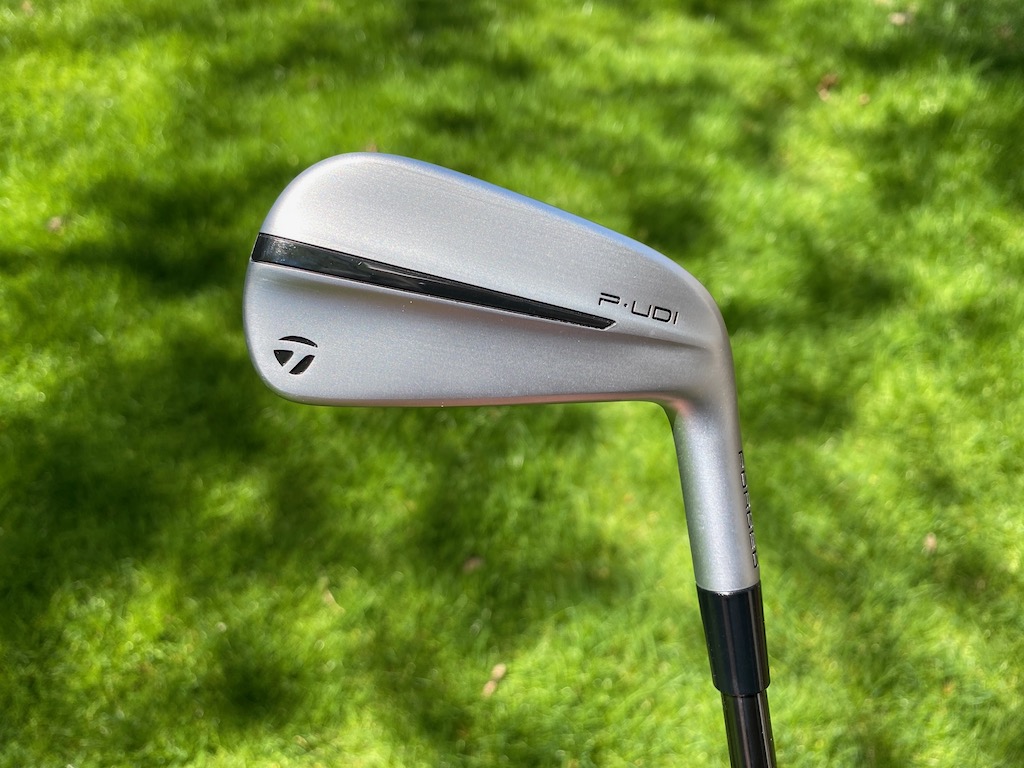
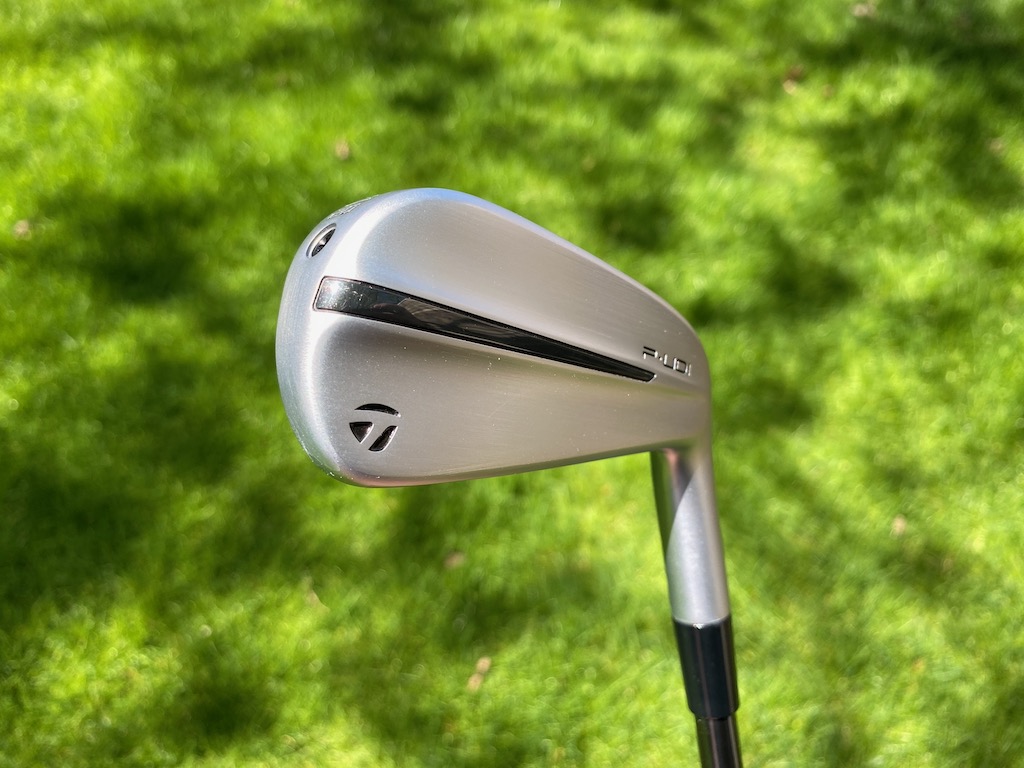
In comparison to past UDI products, the PUDI has a more traditional iron shape, slimmer toplines, and less offset with a little of the backbar visible at address.
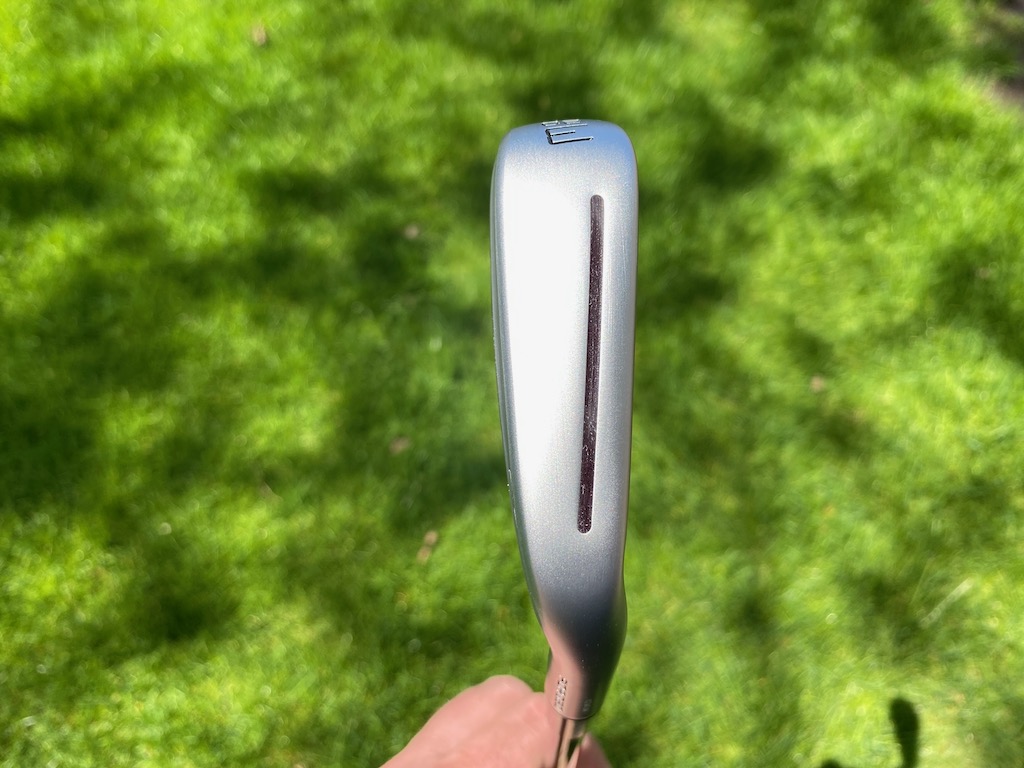

TaylorMade PDHY
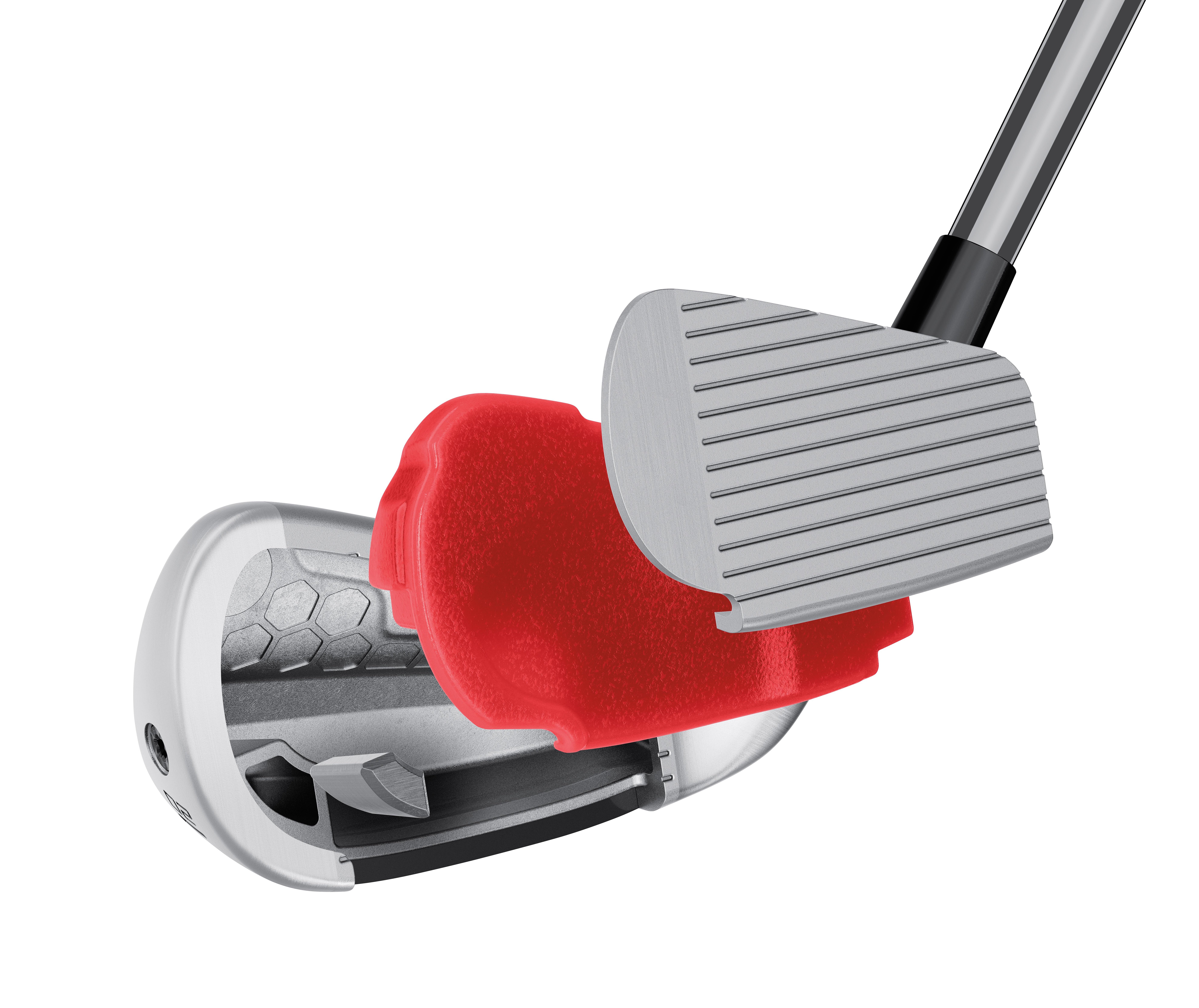
TaylorMade PDHY tech cutaway (via TaylorMade).
Larger in profile than the PUDI, the PDHY seeks to position center of gravity (CG) lower in the club for ease of launch. The toe height is larger and the profile is larger at address — roughly five millimeters longer than PUDI — the sole of the club is wider for improved forgiveness.
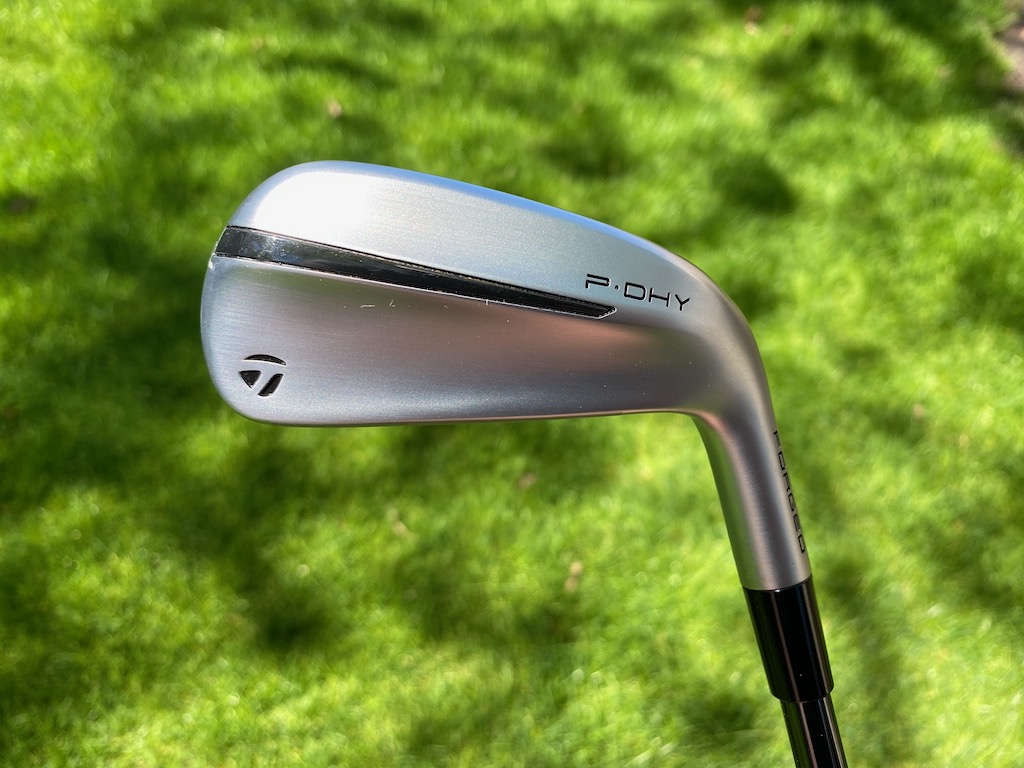



Club Junkie’s take
Golfers who feel like they are missing something at the top of the bag could find the PUDI or PDHY a great option. The look of the PUDI should fit the most discerning eye with a more compact look, less offset, and a thinner topline. If you want a little more confidence looking down the P-DHY will be slightly larger while still being a good-looking utility iron.
For being small packages both models pack a pretty good punch with fast ball speeds, even off-center. The feel is soft and you get a solid feel of the ball compressing off the face when you strike it well. Your ears are greeted with a nice heavy thud as the ball and club come together. The PDHY will launch a little higher for players who need it while the PUDI offers a more penetrating ball flight. Both utility irons could be the cure for an open spot in the top end of the bag.
PUDI, PDHY, or Rescue?
TaylorMade offers the following notes to assist golfers in filling out their bags:
- PUDI has mid-CG right behind the center face to create a more penetrating mid-to-low ball flight
- PDHY has a lower center of gravity to produce an easier-to-launch mid-to-high ball flight.
- Both PUDI and PDHY are lower-flying than the company’s hybrid/Rescue clubs.
- PUDI is more forgiving than P790.
- PDHY is the most forgiving iron in the entire TaylorMade iron family
Pricing, specs, and availability
Price: $249.99
At retail: Now
Stock shafts: UST Mamiya’s Recoil DART (105 X, 90 S and 75 R – only in PDHY)
Stock grip: Golf Pride’s ZGrip (black/grey)
PUDI lofts: 2-17°, 3-20°, 4-22° in both left and right-handed
PDHY lofts: 2-18°, 3-20° and 4-22° in both left and right-handed
- LIKE5
- LEGIT2
- WOW0
- LOL0
- IDHT0
- FLOP0
- OB0
- SHANK0
Equipment
Coolest thing for sale in the GolfWRX Classifieds (5/3/24): Scotty Cameron Champions Choice 2.5+ putter

At GolfWRX, we are a community of like-minded individuals that all experience and express our enjoyment of the game in many ways.
It’s that sense of community that drives day-to-day interactions in the forums on topics that range from best driver to what marker you use to mark your ball. It even allows us to share another thing we all love – buying and selling equipment.
Currently, in our GolfWRX buy/sell/trade (BST) forum, there is a listing for a Scotty Cameron Champions Choice 2.5+ putter
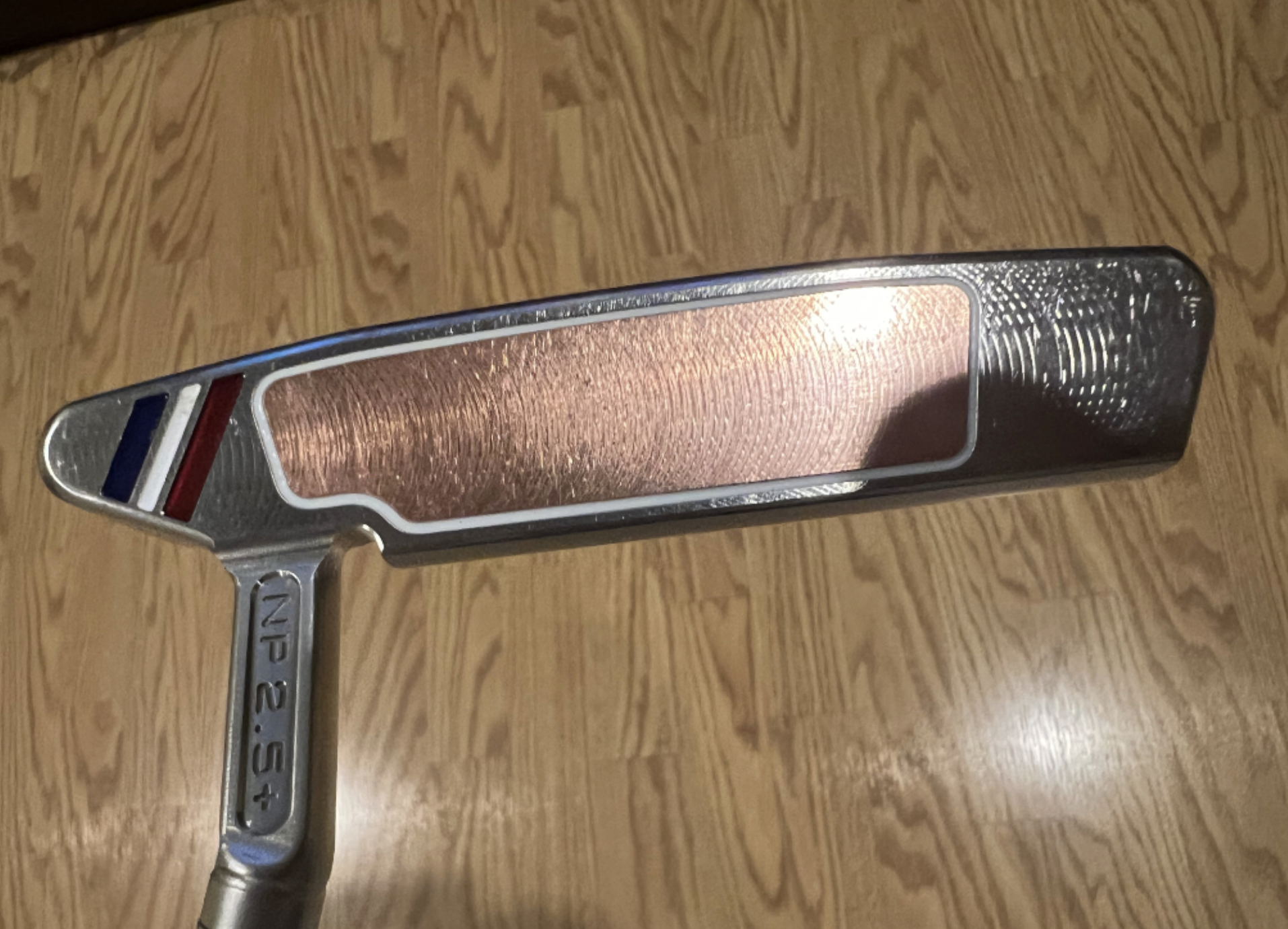
From the seller: (@wwcl): “Has been gamed as pics show. 33.5 includes original h/c and grip. $575 includes shipping and PP fees.”
To check out the full listing in our BST forum, head through the link: Scotty Cameron Champions Choice 2.5+ putter
This is the most impressive current listing from the GolfWRX BST, and if you are curious about the rules to participate in the BST Forum you can check them out here: GolfWRX BST Rules
- LIKE1
- LEGIT1
- WOW0
- LOL0
- IDHT0
- FLOP0
- OB0
- SHANK0
-

 19th Hole2 weeks ago
19th Hole2 weeks agoJustin Thomas on the equipment choice of Scottie Scheffler that he thinks is ‘weird’
-

 19th Hole2 weeks ago
19th Hole2 weeks ago‘Absolutely crazy’ – Major champ lays into Patrick Cantlay over his decision on final hole of RBC Heritage
-

 19th Hole3 weeks ago
19th Hole3 weeks agoTwo star names reportedly blanked Jon Rahm all week at the Masters
-

 19th Hole2 weeks ago
19th Hole2 weeks agoReport: LIV Golf identifies latest star name they hope to sign to breakaway tour
-

 19th Hole3 weeks ago
19th Hole3 weeks agoNeal Shipley presser ends in awkward fashion after reporter claims Tiger handed him note on 8th fairway
-

 19th Hole2 weeks ago
19th Hole2 weeks agoBrandel Chamblee has ‘no doubt’ who started the McIlroy/LIV rumor and why
-

 19th Hole1 week ago
19th Hole1 week agoLET pro gives detailed financial breakdown of first week on tour…and the net result may shock you
-

 Equipment2 weeks ago
Equipment2 weeks agoJason Day on his recent switch into Srixon ZX5 and ZX7 Mk II irons







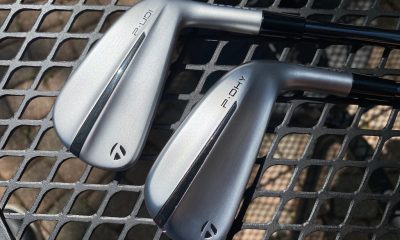


















Pingback: Most interesting pictures from Tuesday at the 2021 Farmers Insurance Open – GolfWRX
craig adams
Mar 12, 2020 at 12:42 am
Charles golf game has holes in it. He’s out of the top 200? A golfer as talented as he is shouldn’t have to tinker with clubs. Manufacturers should be throwing their clubs at him. Did his game go sour since moving to PXG? Why do golfers change a winning combination? Look at Westwood and Jiminez; been playing with Pings all their career.
Eldrick
Feb 20, 2020 at 3:38 am
Looks like his Gapr low is a glued non adjustable one.
Nack Jicklaus
Feb 12, 2020 at 1:02 am
He should have just drilled all the way through the faces like the old “Hammer” driver. Boom!!!!!!!!!!
Ima Fitter
Feb 10, 2020 at 5:02 pm
Love it! You don’t need to spend a ton of money on a new set of irons. As long as they are forged and you like the appearance, pre-owned irons can be fit to your swing. Change the loft & lie, change the shaft, change the grips…any qualified club builder can make them work for you.
Benny
Feb 8, 2020 at 8:02 pm
Great catch Wrx and article. Charl left PXG a while ago. But truly suprised he couldn’t get a set directly and have them custom grinded. Anyways great details and love the comments fellas.
bob stelben
Feb 8, 2020 at 3:01 am
Good video on swing weights. Can you explain tipping of the shaft and the reasons or advantages/disadvantages?
Steve
Feb 7, 2020 at 3:23 pm
I thought Schwartzel was a PXG guy? Guess I am mixing up who Parson’s friends are. And I agree….drilling holes in Miura irons is like adding your own touch up paint to the Mona Lisa. To each his own, I guess.
Funkaholic
Feb 7, 2020 at 4:55 pm
I doubt a pro is bagging those Miuras for status, he is going to play the grooves off of those babies, appearance is for weekend hackers.
Donn Rutkoff
Feb 6, 2020 at 3:17 pm
Palmer probably drilled out hundreds of clubs. Tinkering was common. To suit your own swing.
Fergie
Feb 6, 2020 at 12:33 pm
Drilling Miuras like that is, well, blasphemy. He should just get it over with and get CB’s.
Funkaholic
Feb 7, 2020 at 4:53 pm
CB’s are not the same idea at all, he is reducing swing weight, a CB redistributes weigh to lower in the head making raising MOI and them easier to launch.
Mike Cleland
Feb 6, 2020 at 10:32 am
I grew up playing D5 S/W clubs with standard lengths. Does any manufacturers make heavy headed clubs or do they just shove weight down the shaft & change the center of gravity. All my clubs are covered with lead tape. Any suggestions?
PS: I really enjoy your blogs
jgpl001
Feb 6, 2020 at 3:50 am
Nasty workmanship on a quality blade
He appears to be missing the drilled effect of hs old pig’s……
Dennis
Feb 6, 2020 at 1:28 am
Do all the pros go for swingweight instead of MOI-Matching?
Gurn
Feb 6, 2020 at 12:19 am
Those Miuras need that treatment like a hole in the head
bill bourne
Feb 5, 2020 at 8:01 pm
Does drilling out the backs affect the overall thickness spec?
JP
Feb 6, 2020 at 8:32 am
Huh? Overall thickness spec? What is that?
Tim Armington
Feb 7, 2020 at 7:54 am
You dont know what a thickness spec is??? Wow.
Funkaholic
Feb 7, 2020 at 4:56 pm
Ha! This guy doesn’t know what thickness spec is!
maroon
Feb 8, 2020 at 4:32 am
I know but it has nothing to do with golf 😉